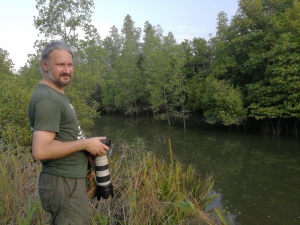Pozsgai, G., Cardoso, P., Rigal, F., Boieiro, M., Gabriel, R., de Azevedo, E.B. & Borges, P.A.V. (2023) Arthropod co-occurrence networks indicate environmental differences between islands and signal introduced species in Azorean native forest remnants.
Frontiers in Ecology and Evolution,
11, 1139285. DOI:10.3389/fevo.2023.1139285 (IF2022 3,0; Q2 Ecology)
Island biotas are in imminent threat from anthropogenic impacts. Of these impacts, the negative effects of exotic species on the taxonomic and functional diversity of the local fauna are of major concern. Exotics may also have a detrimental effect on interspecific interactions which, in turn, can destabilize ecological networks. Species co-occurrence networks can detect species-to-species associations and are used to predict ecological interaction networks and utilized as tools to assess environmental impacts on community structure. Here, we aim to investigate whether or not topological differences of the arthropod co-occurrence networks among native forest fragments from seven Azorean islands can reveal the influence of the abiotic environment and exotic species on these networks. Co-occurrence networks were sensitive to environmental and community dissimilarities, showing a clear separation between islands and pinpointed differences between indigenous and exotic networks. Most exotics were little connected and exotic networks had a large proportion of unconnected species. The resulting decreased connectance and the increased modularity with the increase of the proportions of exotics in the networks suggest that most exotics have too low prevalence to show associations with other species, and only a few dominants drive co-occurrences. The proportion of negative links, as indicators of competition, did not increase with the increase of exotics in the habitats, suggesting that exotics provided new functional roles when they colonized native forest remnants. However, when the theoretical networks consisting of only indigenous species were investigated, connectance decreased and closeness increased with the increase of exotics, suggesting processes of network degradation. Since our study provides ample evidence for the usefulness of co-occurrence network analysis in studying island ecosystems, we recommend the use of this tool for ecosystem assessments, early warning systems and decision-making in island biodiversity conservation.






